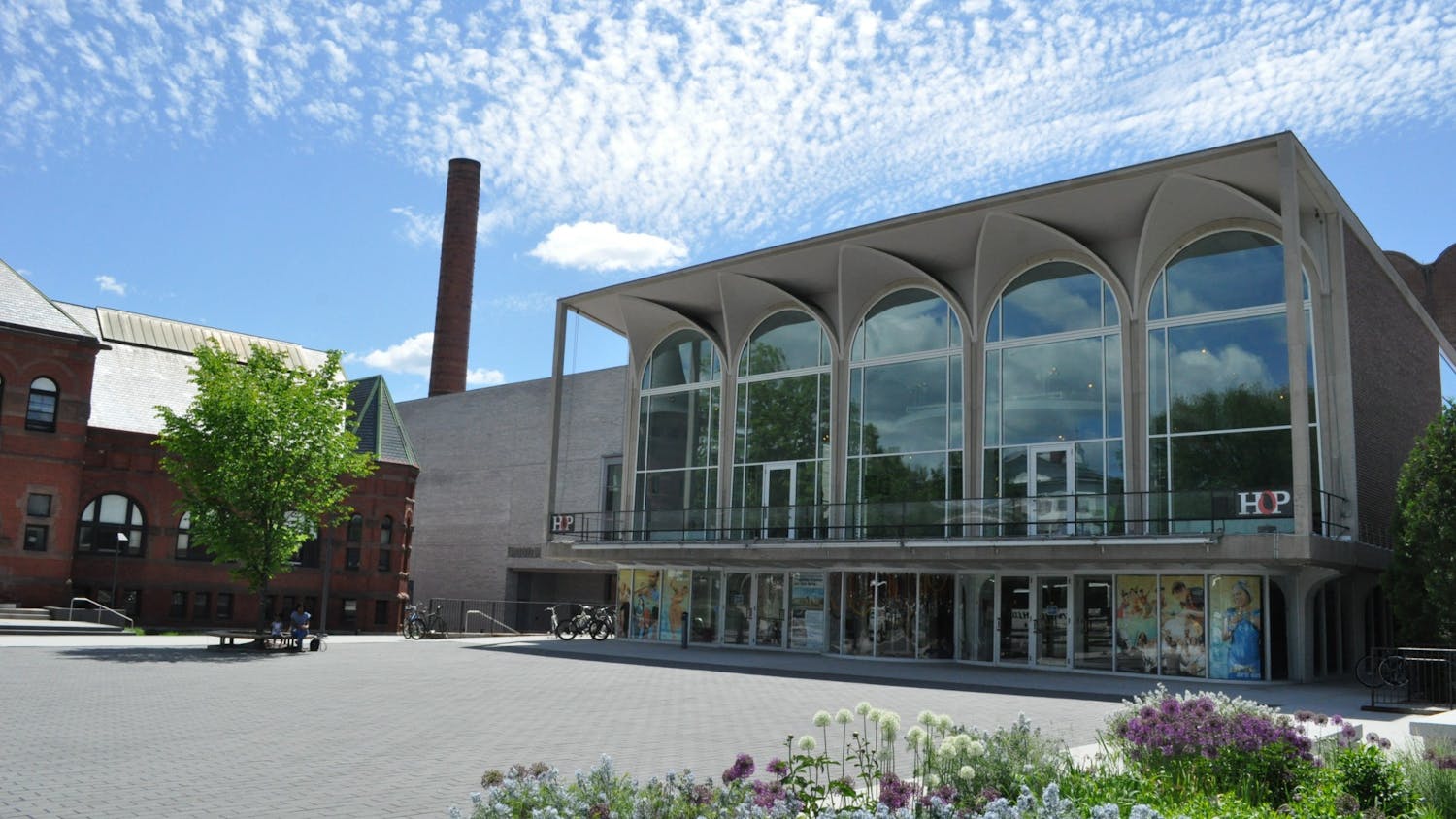"Caboose" showcases finished products and rough sketches of cartoons featured in the inaugural edition of the comics newspaper titled "Caboose," which is available to the town. The name of the newspaper was chosen to represent the locomotive history of White River Junction, according to co-editor of the newspaper Chuck Forsman, an alumnus of the Center.
Forsman came up with the idea to publish the free newspaper, which first came out in April, after a visit to a comic show in Montreal with the other co-editor, Max de Radigus. Forsman said that the two came across a similar comic newspaper and thought, "Man, we could do that here."
The comics exhibit a variety of styles, ranging from line drawings to computer generated paper cut-out style images. A cut-out style comic strip titled "The Cannibal" is shown alongside the more standard line-drawings of its rough draft, for example."The following pieces of paper, lined with various brands of ink and erased graphite, represent the work of your neighbors," read the introductory placard for the exhibit, written by Forsman. "Your neighbors created these with White River Junction in mind."
Several completed cartoons, taken from the newspaper itself, are shown alongside the corresponding draft outlines that are later filled in with color and finalized for printing. Abandoned and erased wordings of speech bubbles and scribbled out comic cells give the visitor insight into the work required for a finished product. Some of the revisions are slight changes in the composition of the scene shown in the cell, while others are complete deletions of dialogue and characters.
Among the comic strips on display are stories about an alcoholic horse, the crime-fighting "Junction Skunk," ghosts inhabiting a hotel, dinosaur fights and pirates all of which are, of course, what one would expect to find on a trip to White River Junction.
Other comics featured slightly more realistic subject matter: The tragic story of a branch stuck on an electric wire and a poem about White River Junction are both represented in comic book form.
"Our loose theme was White River. We didn't want to make too strict of a theme because that can lead to bad comics," Forsman said.
The artists featured in the exhibit included current students and alumni of the Center and visiting artist Nate Beatty, who crafted a cartoon depicting men hunched over a White River Junction themed pinball machine.
"I never really liked the idea of hanging up comics, because it's like putting pages of a novel on a wall," Forsman said.
Despite Forsman's reservations, the comics were received well by visitors at the exhibit opening, he said.
The Center which now offers two-year Master of Fine Arts degrees, certificates in cartooning and summer workshops was opened in 2004 under the guidance of Michelle Ollie and James Sturm, according to Forsman and the Center's website.
"I think they saw White River Junction as pretty up-and-coming," Forsman said.
With more than 100 students enrolled, the Center focuses its curriculum on art, literature and graphic design in order to prepare students for the creation of comics and graphic novels.
Co-editor De Radigus, from Brussels, is an example of the far reach of the Center, which attracts students from all over the world, Forsman said.
Visitors can see the exhibit on Saturdays from 10 a.m. to 2 p.m. through August 14th.




